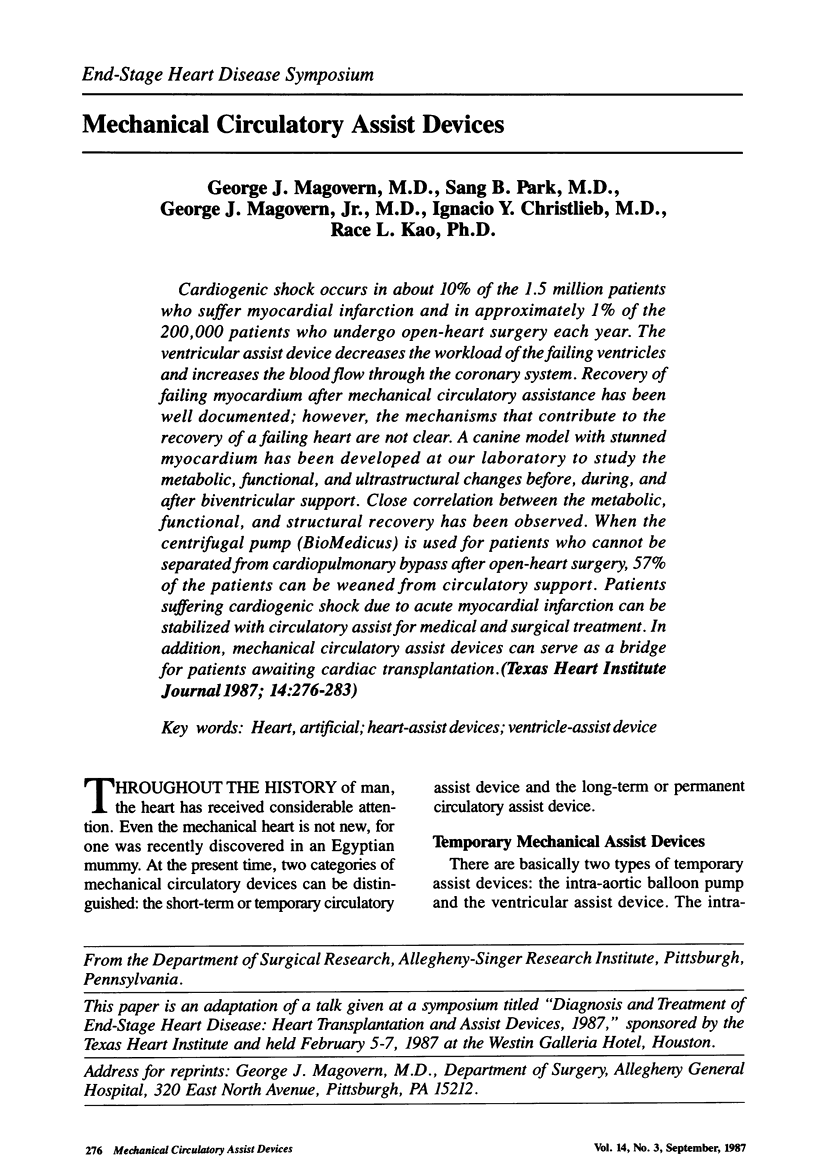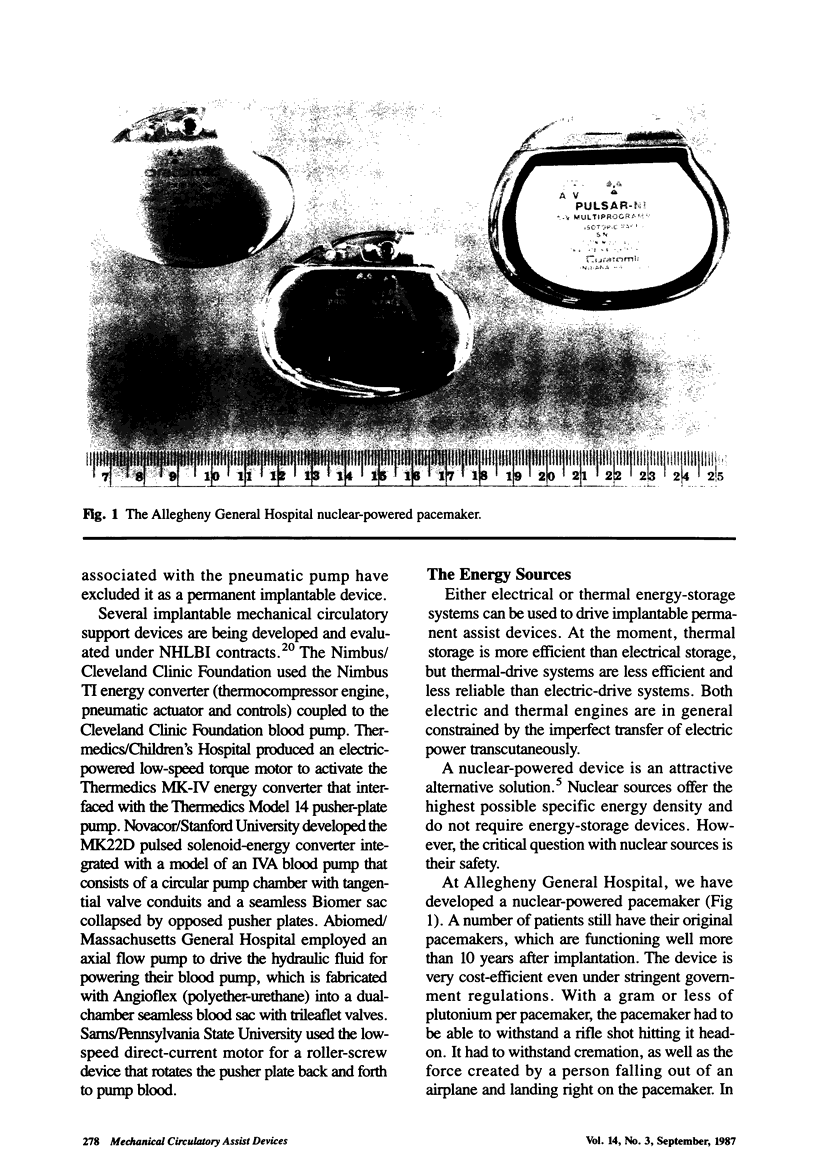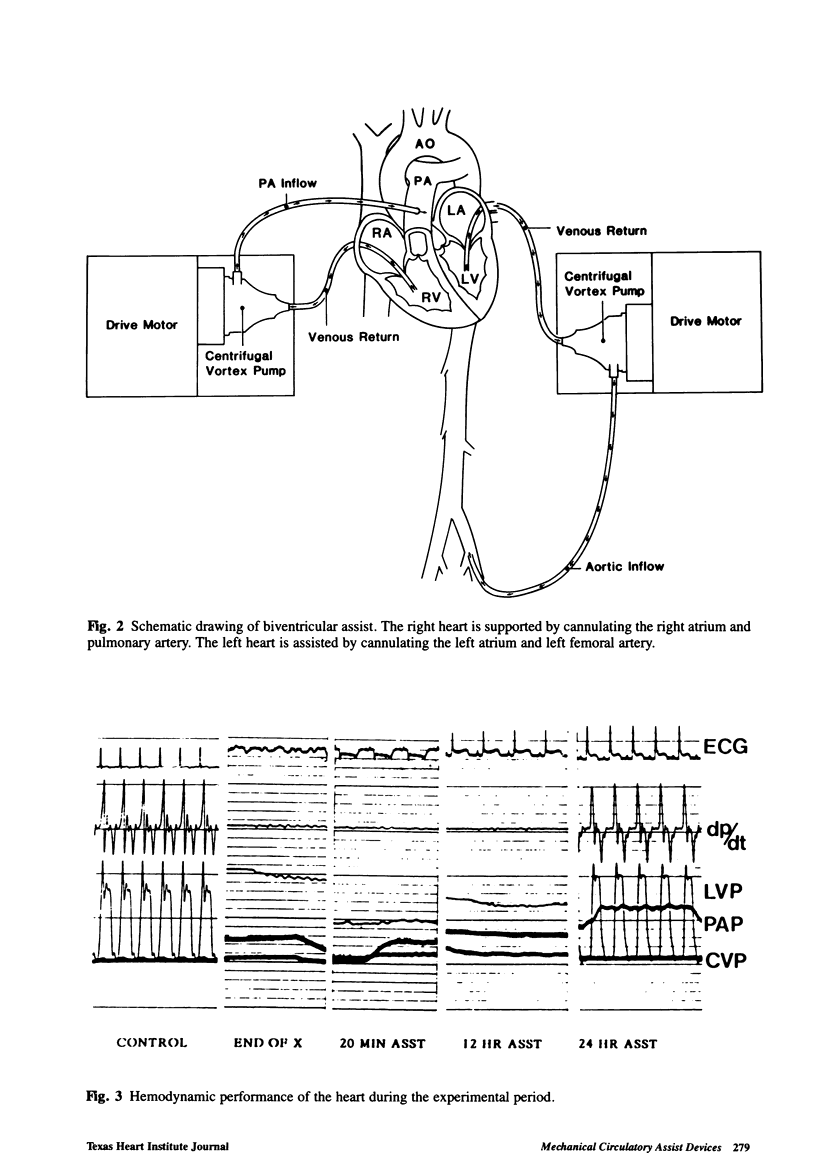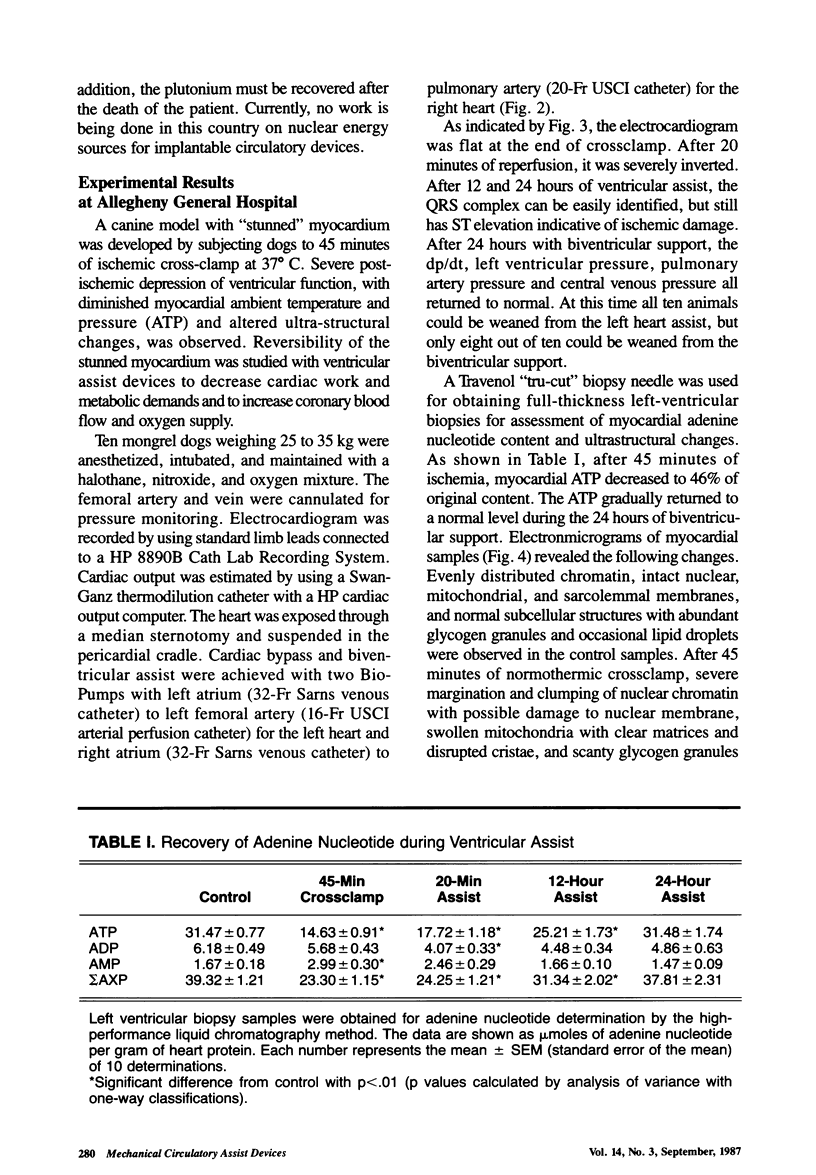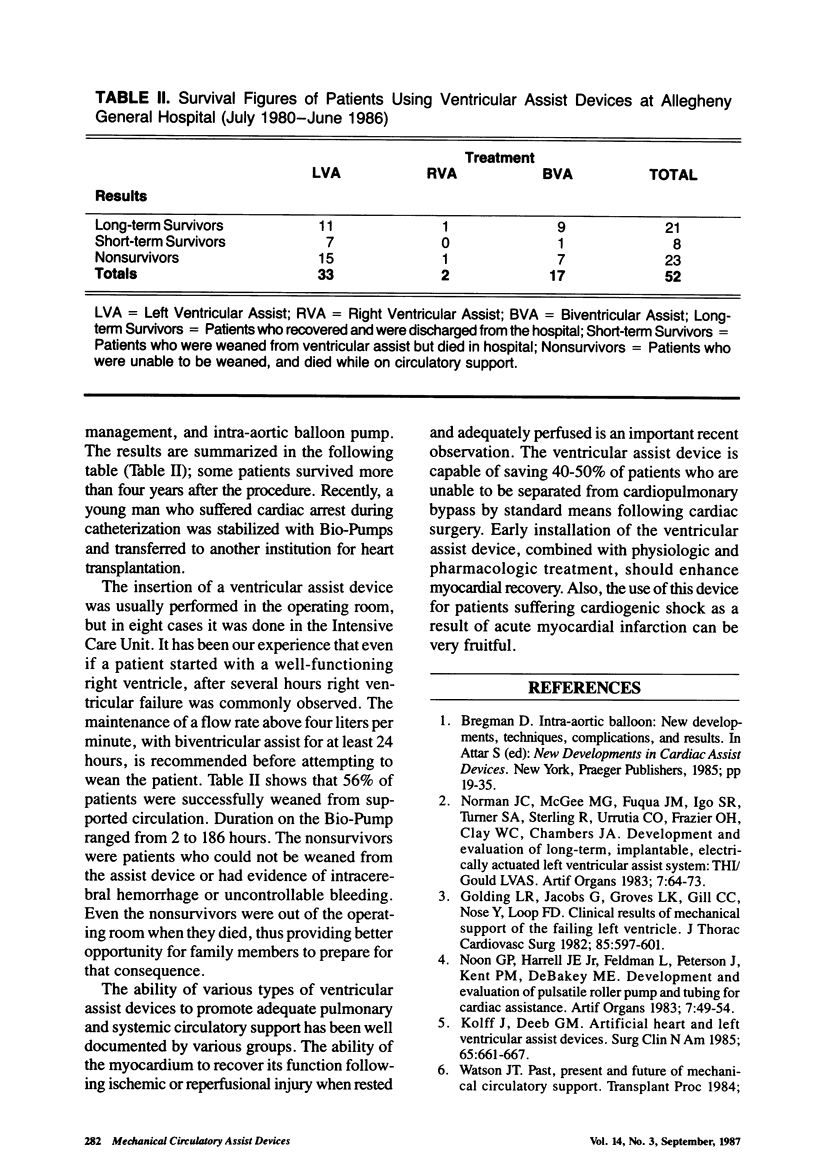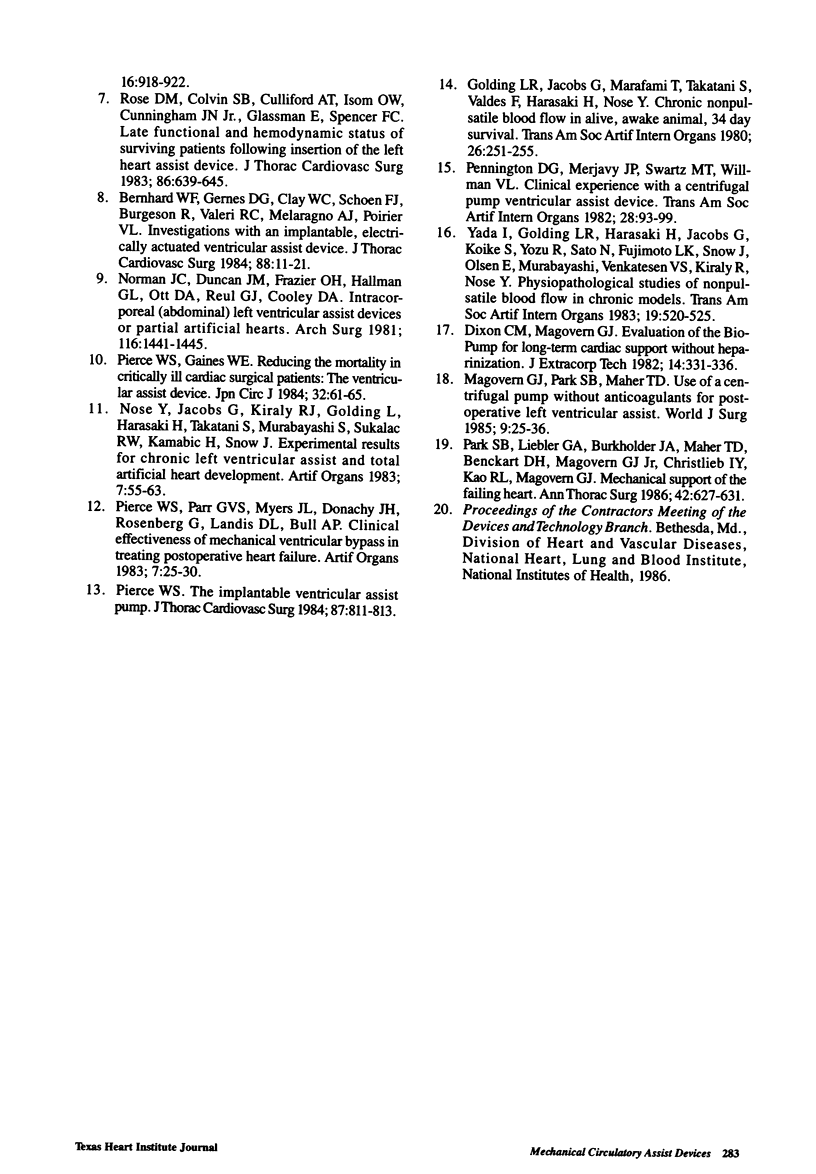Abstract
Cardiogenic shock occurs in about 10% of the 1.5 million patients who suffer myocardial infarction and in approximately 1% of the 200,000 patients who undergo open-heart surgery each year. The ventricular assist device decreases the workload of the failing ventricles and increases the blood flow through the coronary system. Recovery of failing myocardium after mechanical circulatory assistance has been well documented; however, the mechanisms that contribute to the recovery of a failing heart are not clear. A canine model with stunned myocardium has been developed at our laboratory to study the metabolic, functional, and ultrastructural changes before, during, and after biventricular support. Close correlation between the metabolic, functional, and structural recovery has been observed. When the centrifugal pump (BioMedicus) is used for patients who cannot be separated from cardiopulmonary bypass after open-heart surgery, 57% of the patients can be weaned from circulatory support. Patients suffering cardiogenic shock due to acute myocardial infarction can be stabilized with circulatory assist for medical and surgical treatment. In addition, mechanical circulatory assist devices can serve as a bridge for patients awaiting cardiac transplantation. (Texas Heart Institute Journal 1987; 14:276-283)
Keywords: Heart, artifical
Keywords: heart-assist devices
Keywords: ventricle-assist device
Full text
PDF